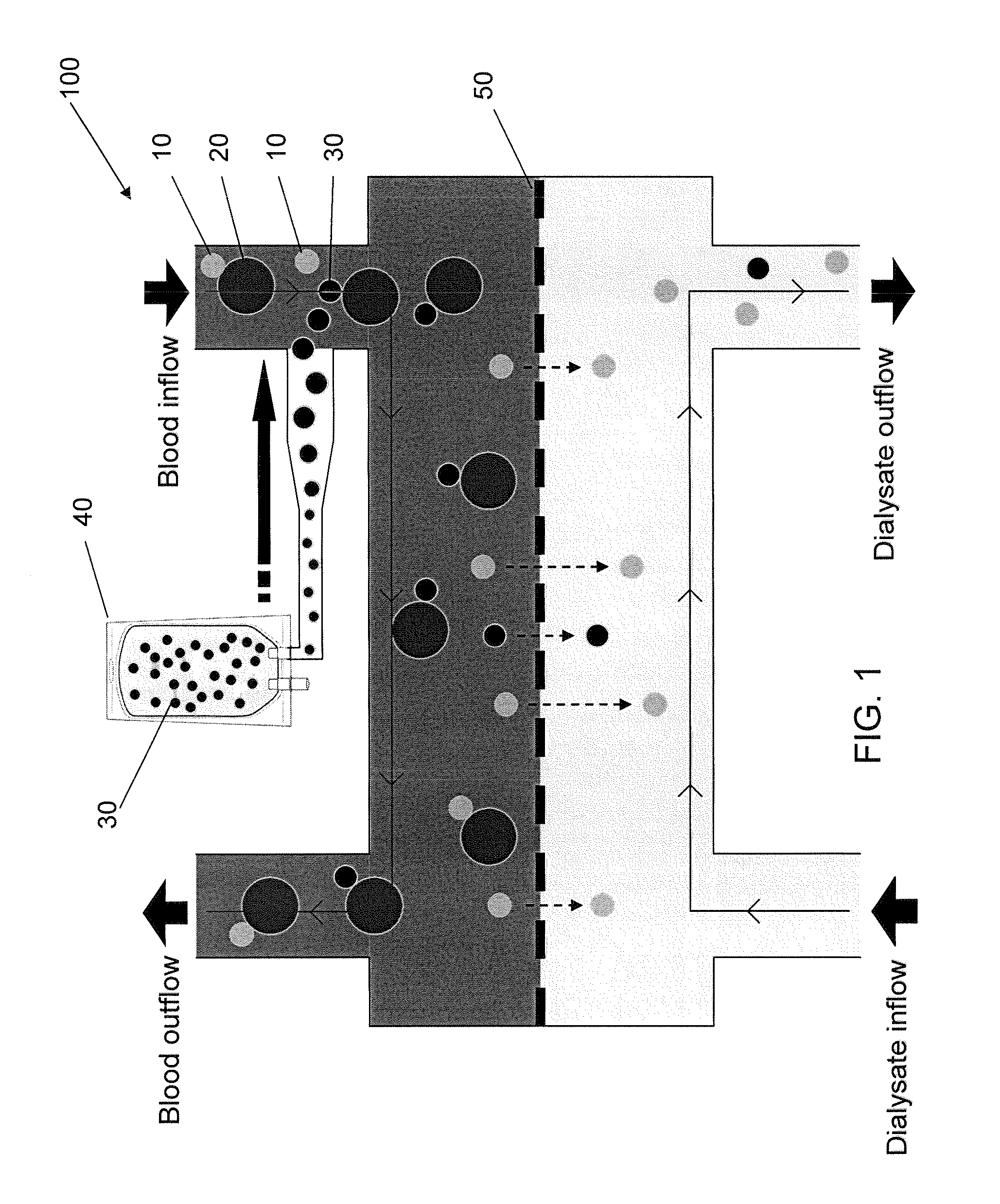Method of removing protein-bound deleterious substances during extracorporeal renal replacement treatment
a technology of extracorporeal renal replacement and deleterious substances, which is applied in the direction of solvent extraction, water/sewage treatment by ion exchange, separation processes, etc., can solve the problem that protein-bound uremic toxins are difficult to remove by dialysis, and achieve the effect of increasing the amount of previously bound uremic toxin
- Summary
- Abstract
- Description
- Claims
- Application Information
AI Technical Summary
Benefits of technology
Problems solved by technology
Method used
Image
Examples
example 1
Uremic Toxin Displacement Model Calculations
[0025]In order to model the concept of using a displacer molecule to improve removal of albumin-bound toxins by dialysis, some basic equilibrium and kinetic constants must be known or estimated. Another necessary input is the plasma concentration of all components. For the current model calculations, bilirubin was used as the displacer molecule and 3-carboxy-4-methyl-5-propyl-2-furanpropanoic acid (CMPF) was the albumin-bound toxin; however, these calculations can be generalized to any displacer and any bound toxin if appropriate equilibrium constant information is provided. This model only considers these three molecules mentioned (albumin, bilirubin, and CMPF). Of course, there are expected to be a number of other species that bind to albumin in the plasma.
[0026]In general a binding reaction can be written as:
[0027]A+B⇔k1k-1AB(1)
where A and B represent free or unbound species and AB is the bound complex. The rate of the forward or bind...
example 2
Competitive Displacement of Indoxyl Sulfate by Bilirubin in Model Uremic Plasma
[0047]Two samples of uremic plasma (blood urea nitrogen (BUN) of about 55 mg / dL, albumin concentration of 3.82 g / dL) including indoxyl sulfate were incubated for 12 hours at 37° C. One sample also included 2 mMolar bilirubin ditauride (Bil-DT). The bilirubin containing sample showed a free indoxyl sulfate concentration of 0.93 μg / ml, while the control uremic plasma containing no Bil-DT, showed a free indoxyl sulfate concentration of 0.65 μg / ml. These results are indicative of competitive displacement of indoxyl sulfate by bilirubin.
PUM
 Login to View More
Login to View More Abstract
Description
Claims
Application Information
 Login to View More
Login to View More - R&D
- Intellectual Property
- Life Sciences
- Materials
- Tech Scout
- Unparalleled Data Quality
- Higher Quality Content
- 60% Fewer Hallucinations
Browse by: Latest US Patents, China's latest patents, Technical Efficacy Thesaurus, Application Domain, Technology Topic, Popular Technical Reports.
© 2025 PatSnap. All rights reserved.Legal|Privacy policy|Modern Slavery Act Transparency Statement|Sitemap|About US| Contact US: help@patsnap.com



